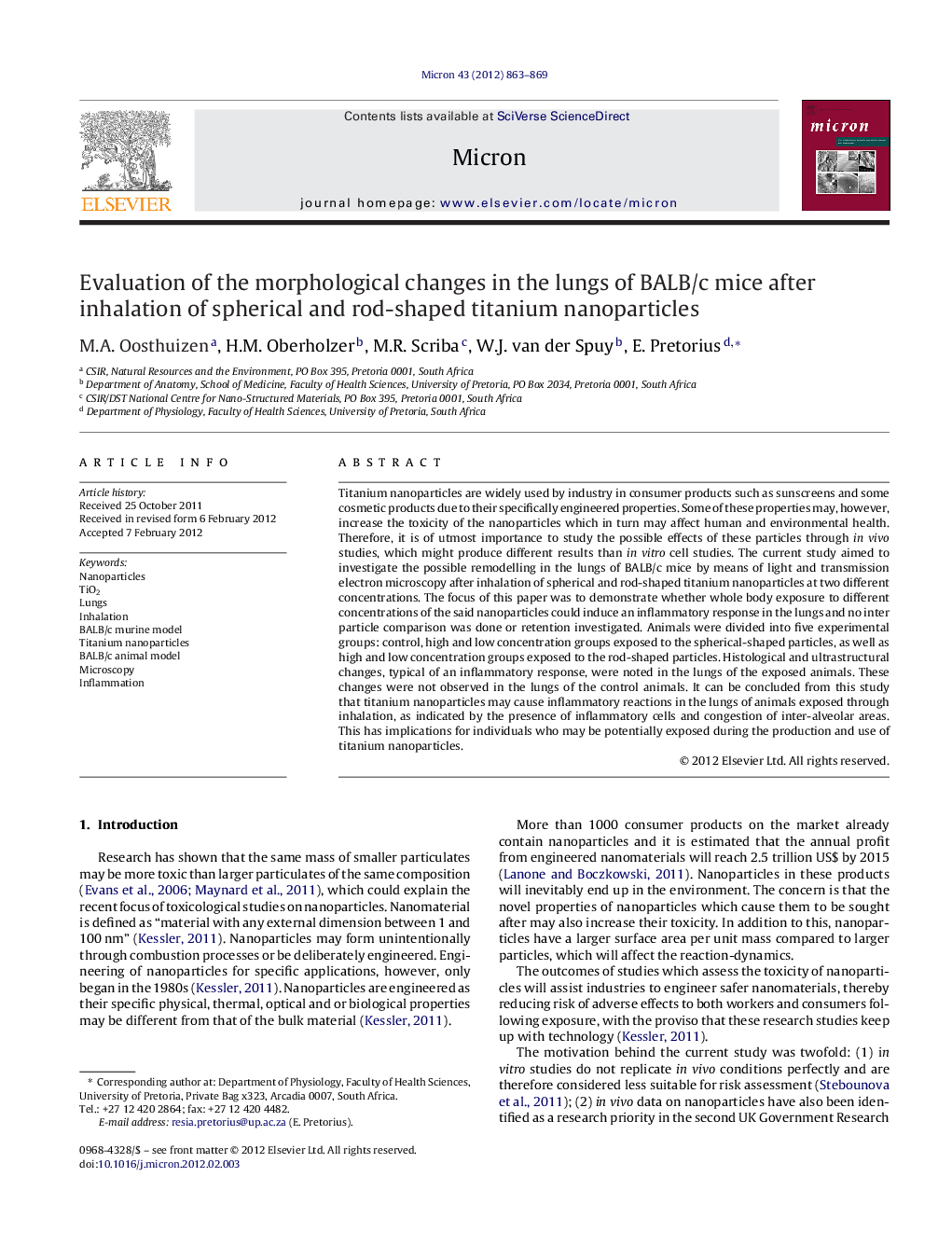| Article ID | Journal | Published Year | Pages | File Type |
|---|---|---|---|---|
| 1589224 | Micron | 2012 | 7 Pages |
Titanium nanoparticles are widely used by industry in consumer products such as sunscreens and some cosmetic products due to their specifically engineered properties. Some of these properties may, however, increase the toxicity of the nanoparticles which in turn may affect human and environmental health. Therefore, it is of utmost importance to study the possible effects of these particles through in vivo studies, which might produce different results than in vitro cell studies. The current study aimed to investigate the possible remodelling in the lungs of BALB/c mice by means of light and transmission electron microscopy after inhalation of spherical and rod-shaped titanium nanoparticles at two different concentrations. The focus of this paper was to demonstrate whether whole body exposure to different concentrations of the said nanoparticles could induce an inflammatory response in the lungs and no inter particle comparison was done or retention investigated. Animals were divided into five experimental groups: control, high and low concentration groups exposed to the spherical-shaped particles, as well as high and low concentration groups exposed to the rod-shaped particles. Histological and ultrastructural changes, typical of an inflammatory response, were noted in the lungs of the exposed animals. These changes were not observed in the lungs of the control animals. It can be concluded from this study that titanium nanoparticles may cause inflammatory reactions in the lungs of animals exposed through inhalation, as indicated by the presence of inflammatory cells and congestion of inter-alveolar areas. This has implications for individuals who may be potentially exposed during the production and use of titanium nanoparticles.
► Titanium nanoparticles are widely used by industry in consumer products, but may be cytotoxic. ► We find remodelling of the lungs as well as inflammation, after studying the effects of the particles in a BALB/c animal model. ► This has implications for individuals potentially exposed during production of the titanium nanoparticles.
